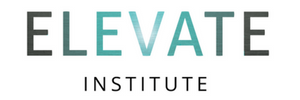Reduce toxins in beauty products
The beauty industry is a multi-billion dollar industry that has been thriving for decades. While makeup and skincare products are meant to enhance our beauty, many toxins in beauty products could be harmful to our health. With a vast array of makeup products available in the market, it can be overwhelming to determine which ones are safe and which ones are not.
Fortunately, there are steps that you can take to ensure that the makeup products you use are free from harmful chemicals. In this article, we’ll provide you with a step-by-step guide on how to check your makeup products for toxic ingredients. By following these steps, you can make informed decisions about the products you use and protect your health in the process. Let’s get started!
Here are 7 steps you can follow to get organized and check your makeup products to reduce toxins in beauty products
1. Take inventory:
Gather all of your makeup products, including cosmetics, skincare, haircare, and nail products, and make a list of each product’s name and brand.
Before you can begin checking for toxins in your beauty products, it’s important to take stock of what you currently have. Gather all of your makeup products together in one place, including foundation, blush, eyeshadow, mascara, lipstick, lip gloss, and any other products you use on a regular basis. This will give you a better idea of the scope of the task at hand and allow you to organize your products for easier checking.
Once you have all of your beauty products in one place, sort them into categories, such as “face products,” “eye products,” and “lip products.” This will make it easier to keep track of which products you have checked and which ones you still need to check for toxins.
As you go through your beauty products, take note of the brand, product name, and any other identifying information that will help you research the ingredients and potential toxins. You may also want to note when you purchased each product, as makeup products can expire and become less effective over time.
By taking inventory of your beauty products, you can create a comprehensive list of what you have, which will make it easier to check each product for toxins in beauty products. This will also give you a better understanding of your overall makeup collection and help you make informed decisions about which products to keep and which ones to discard based on the level of toxins present.
2. Research:
Once you’ve taken inventory of your makeup products, the next step is to research the ingredients for potential toxins in beauty products. Many cosmetics and skincare products contain harmful chemicals that can have adverse effects on your health. It’s important to be aware of these potential toxins and learn how to identify them.
To research the ingredients in your beauty products, start by checking the product label. Look for any warning labels or symbols that indicate the presence of potentially harmful chemicals. You can also visit the manufacturer’s website or contact their customer service department for more information about the product’s ingredients.
Next, research each ingredient on the product label to determine its potential for toxicity. Look for common toxic ingredients in beauty products such as parabens, phthalates, formaldehyde, triclosan, and synthetic fragrances. These ingredients can have negative effects on your health, ranging from skin irritation and allergies to hormonal disruptions and even cancer.
To make your research easier, there are several resources available online that provide information about toxic ingredients in beauty products. Some websites even offer databases where you can search for specific ingredients to learn more about their potential hazards. You can also consult with a dermatologist or other healthcare professional for guidance on safe and healthy beauty products.
By taking the time to research the ingredients in your beauty products for potential toxins, you can make informed decisions about what you put on your skin. This can help you avoid harmful chemicals that may have negative impacts on your health and well-being.
3. Check labels:
Look for ingredient lists on the product packaging, and check for any of potentially harmful ingredients on the Environmental Working Group website. If the ingredient list is not available, you may need to visit the product’s website or contact the manufacturer to obtain it.
Checking product labels for toxins in beauty products is an essential step in ensuring that the products you use are safe and healthy for your skin. While it can be overwhelming to decipher the long list of ingredients on a label, it’s important to take the time to read them carefully.
When checking product labels, look for the specific ingredients that you identified during your research in Step 2. Keep in mind that some products may list ingredients under different names, so it’s important to familiarize yourself with the different names that common toxins in beauty products may go by.
It’s also important to look for any certifications or labels on the packaging that indicates the product is free from harmful chemicals. For example, some products may be labeled “organic,” “all-natural,” or “cruelty-free.” While these labels don’t necessarily guarantee that a product is free from toxins, they can be a helpful starting point in your search for safe and healthy beauty products.
In addition to checking the product label, you may also want to research the brand and manufacturer of the product to learn more about their commitment to using safe and healthy ingredients. Some companies have a strict policy against using certain toxins in beauty products, while others may have a less rigorous approach.
By checking product labels for toxins in beauty products, you can make informed decisions about which products to use and which ones to avoid. This can help you avoid harmful chemicals that may have negative impacts on your health and well-being, and ensure that you’re using safe and healthy products on your skin.
4. Consider alternatives:
If you’ve identified products in your inventory that contain toxins in beauty products, it’s time to start considering alternatives. Fortunately, there are many safe and healthy alternatives available that can help you achieve the same results without exposing your skin to harmful chemicals.
When looking for alternatives, start by researching brands and products that prioritize using safe and healthy ingredients. Look for products that are labeled “organic,” “all-natural,” or “cruelty-free.” These products are typically made with natural ingredients that are less likely to cause skin irritation or other negative side effects.
You may also want to consider making your own beauty products using natural ingredients. There are many resources available online that provide recipes for DIY skincare and makeup products, using ingredients like coconut oil, shea butter, and essential oils. By making your own products, you can control exactly what goes into them and ensure that they’re free from toxins in beauty products.
Another option is to switch to using fewer products overall. While it can be tempting to use a variety of products to achieve a specific look, using fewer products can actually be better for your skin in the long run. By simplifying your routine and using only the products that you truly need, you can reduce your exposure to harmful chemicals and toxins in beauty products.
By considering alternatives to products that contain toxins in beauty products, you can make a positive impact on your skin health and overall well-being. Not only will you be using safer and healthier products, but you may also find that these alternatives are more effective and better for your skin in the long run.
5. Dispose of unsafe products:
If you’ve identified products in your inventory that contain toxins in beauty products and are not safe for use, it’s important to dispose of them properly. This means not only throwing them away, but also ensuring that they’re not harmful to the environment.
Before disposing of any products, check to see if they can be recycled or disposed of in a special way. For example, some communities have hazardous waste collection days where you can safely dispose of products that contain toxins in beauty products. Other products, such as aerosol cans or glass containers, may need to be recycled separately.
It’s also important to dispose of products that contain toxins in beauty products in a way that ensures they won’t be harmful to people or animals. This may mean placing them in a sealed container before throwing them away or taking them to a special disposal site.
Once you’ve disposed of any unsafe products, it’s time to focus on replacing them with safer and healthier alternatives. This may require some additional research and experimentation to find products that work well for your skin and meet your needs, but it’s worth the effort to ensure that you’re not exposing yourself to harmful toxins in beauty products.
By disposing of unsafe products that contain toxins in beauty products, you can take an important step in protecting your health and the environment. Not only will you be eliminating the risk of harmful chemicals, but you’ll also be making a positive impact on the world around you.
6. Keep a record:
Once you’ve identified the products in your collection that contain toxins in beauty products and replaced them with safer alternatives, it’s important to keep a record of the products you’re using. This will help you to avoid accidentally using products in the future that contain toxins in beauty products.
One way to keep a record of your beauty products is to create a spreadsheet or document that includes the product name, brand, and ingredients. This will allow you to quickly check whether a product you’re considering buying contains any toxins in beauty products.
Another option is to use an app or online tool that can help you to identify products that contain toxins in beauty products. These tools may provide information about specific ingredients to watch out for or offer ratings of products based on their safety.
By keeping a record of the products you’re using and staying informed about the latest information on toxins in beauty products, you can take an active role in protecting your health and well-being. You’ll be able to make informed choices about the products you use and minimize your exposure to harmful chemicals.
7. Regularly check your products:
It’s important to remember that the ingredients in beauty products can change over time, so it’s essential to regularly check the labels of the products you’re using to ensure that they don’t contain any harmful toxins in beauty products.
Set a reminder on your calendar to check your beauty products every six months or so. This will give you enough time to use up products that you’ve already purchased while still allowing you to stay on top of any new products that you’re considering buying.
When checking your products, pay close attention to the ingredient list and any warnings or cautionary statements on the label. Look out for common toxins in beauty products, such as parabens, phthalates, and formaldehyde, and make note of any new ingredients that you may not be familiar with.
If you do find a product that contains toxins in beauty products, dispose of it properly and replace it with a safer alternative. By regularly checking your products and staying informed about the latest information on toxins in beauty products, you can ensure that you’re always using products that are safe and healthy for your body.
In conclusion, following these seven steps can help you to minimize your exposure to harmful toxins in beauty products and protect your health and well-being. By taking an active role in selecting and monitoring the products you use, you can make informed choices and promote a healthier and more sustainable beauty routine.






